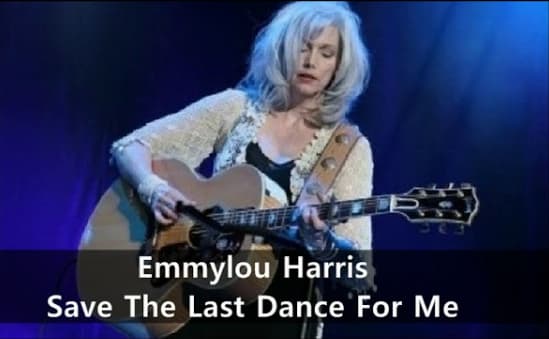
A Promise Carried in a Voice That Knows the Weight of Longing
When Emmylou Harris released her rendition of “Save the Last Dance for Me” on the 1979 album Blue Kentucky Girl, the song ascended to No. 4 on the Billboard Hot Country Singles chart, reaffirming her power not only as an interpreter of other writers’ work but as an artist capable of reshaping familiar material into something startlingly intimate. Originally popularized by The Drifters in 1960, the song had long lived in the collective American memory—but in Harris’s hands, it became an entirely different kind of testimony: quieter, more contemplative, and steeped in the emotional clarity that defined her late-1970s artistic peak.
Harris approaches “Save the Last Dance for Me” with the wisdom of someone who understands the song’s central paradox: love strong enough to allow freedom, and longing strong enough to mark its limits. Her voice—gentle yet unwavering—trades the original’s urbane R&B sway for a country-folk tenderness that feels almost confessional. Gone is the street-corner rhythm of early-’60s New York. What remains is the pulse of a heart trying to speak softly without breaking.
The song’s narrative has always carried a unique emotional tension. Its speaker grants a lover permission to dance, laugh, and enjoy the night—yet beneath this generosity lies the unmistakable ache of vulnerability. Harris leans into that ache, not by exaggerating it, but by distilling it. Her phrasing lingers on the pivotal lines, allowing each word to settle like dust on an empty hardwood floor. In her interpretation, the song becomes less a reassurance and more a plea—a reminder that love, no matter how secure, never stands entirely free of fear.
Musically, her arrangement underscores this shift. The production on Blue Kentucky Girl favors clarity over ornamentation; the acoustic textures breathe around her voice rather than crowd it. Where the Drifters offered a rhythmic invitation to sway, Harris creates space—an open, almost nocturnal air—where the emotional stakes rise to the surface. Fiddle lines glide rather than spark. The tempo relaxes, not into melancholy, but into earnestness. It is a dance slowed down until the story within it becomes impossible to ignore.
What endures in Harris’s version is its quiet authority. She does not retell the song; she reveals it. Each verse unfolds like a letter written late at night, after the noise has faded and only the truth remains. In this light, “Save the Last Dance for Me” becomes more than a request. It becomes a vow—a recognition that love’s deepest strength lies not in possession, but in the faith that someone will return to you when the music stops.